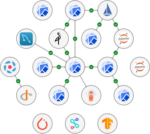
The concept and promise of open source has been around for decades. It’s thriving in the industry today. While commercialization strategies around open source continue to evolve and disrupt, purveyors of open-source software cannot lose sight of what makes it such a powerful force for innovation.
Looking back over the past 20 years of software development, it’s hard to overstate the impact of the open source community. Just about every category of software has been transformed by open source.
Businesses in an ever-growing list of industries have embraced open source. Major technology firms have recognized its value and are contributing to projects with financial support, resources, expertise and more.
The wide acceptance of open source, however, makes it more vulnerable to regulatory and commercial influences that could undermine the very principles that have made it so valuable. To be sure, growth is tantamount to change – open source should evolve as it gains more influence in the tech and business worlds. At the same time, the fundamentals of open source should be preserved so it can continue to thrive as an engine of innovation.
Fortunately, open source contributors, businesses and other organizations still have a strong grasp of open source fundamentals. The path forward won’t always be simple, but a future built on open source is clearly within sight.
When you boil it down to the fundamentals, what is open source? The open source model is effectively Wikipedia for software, with developers from all backgrounds contributing and collaborating in the effort to provide free yet robust source material. It’s an important effort because it drives innovation – after all, there’s no innovation without experimentation, and you can’t experiment if it costs too much.
Much of the change we’ve witnessed in the open source community has been unequivocally positive. The community of contributors is broader and more diverse than ever, with web designers and different types of engineers joining software developers in the effort. Major industries that were once hesitant to leverage open source, such as telecommunications, are now embracing it to keep up with the pace of innovation.
Meanwhile, the emergence of the cloud served as a catalyst for growth, providing different avenues of commercialization. With the cloud, open source became not only grounds for innovation, but grounds for creating a sustainable business. Commercialization strategies have evolved to include providing enterprise support offerings, consulting services on top of open source software, as well as complementary proprietary products on top of it.
The commercialization of open source led to the emergence of the “open core” dynamic, with vendors developing proprietary software on top of open source. Open core presents one way to accelerate innovation, though it can lead to vendor lock-in – a scenario at odds with the spirit of open source. Vendor lock-in is especially problematic as organizations embrace multi-cloud and hybrid cloud environments, where software products are expected to work seamlessly across platforms.
The complexity of distributed systems also presents a challenge for open source. Once an organization has committed to a multi-cloud or hybrid cloud model, it needs software that can be integrated, operated, secured and brought into compliance in a distributed manner. That means you need to have layers of open source software that can run on top of each other.
Luckily, many companies are already committed to averting these challenges with a commitment to the fundamental premise of open source: that you will be able to decide how to use it. Moreover, you can amplify open source usage by working with communities and contributing upstream.
Security and stability are also more important than ever as open source becomes an integral part of a growing number of industries. Encouragingly, the community has stayed mindful of this challenge, leveraging tooling from different organizations such as the Cybersecurity Framework of the National Institute of Standards and Technology (NIST) .
Another lingering threat is the misuse of intellectual property law. Patent infringement lawsuits can create uncertainty around open source projects, and they could hinder innovation. Not surprisingly, as open source has become more widely used and more successful, patent trolls have followed. Organizations like the Open Source Initiative have taken note.
These challenges aren’t the responsibility of any one entity. Regulators can take meaningful steps, such as reforming intellectual property laws to curb the threat of trolls. But, it’s also up to academia, research institutions, companies and industries to ensure that regulators fully understand the dynamics at work so they can create new legal frameworks without squelching innovation. This interaction should unfold within the open source foundations serving as instrumental arenas where collective interests combine.
The open source foundations offer the right venues where companies sustain the open source community by fostering collaboration through conferences and meetups. These gatherings act also as pivotal hubs where a comprehensive educational dynamic about the open source paradigm takes place. Ultimately, this paradigm acts as the catalyst, converting various drives and motivations into innovation excellence.
The existence of ongoing threats and challenges isn’t a condemnation of the vibrant open source community. Technology is and always has been a risky and stimulating business — open source is no different. Open source requires mindful support in order to thrive, and thrive it will.






